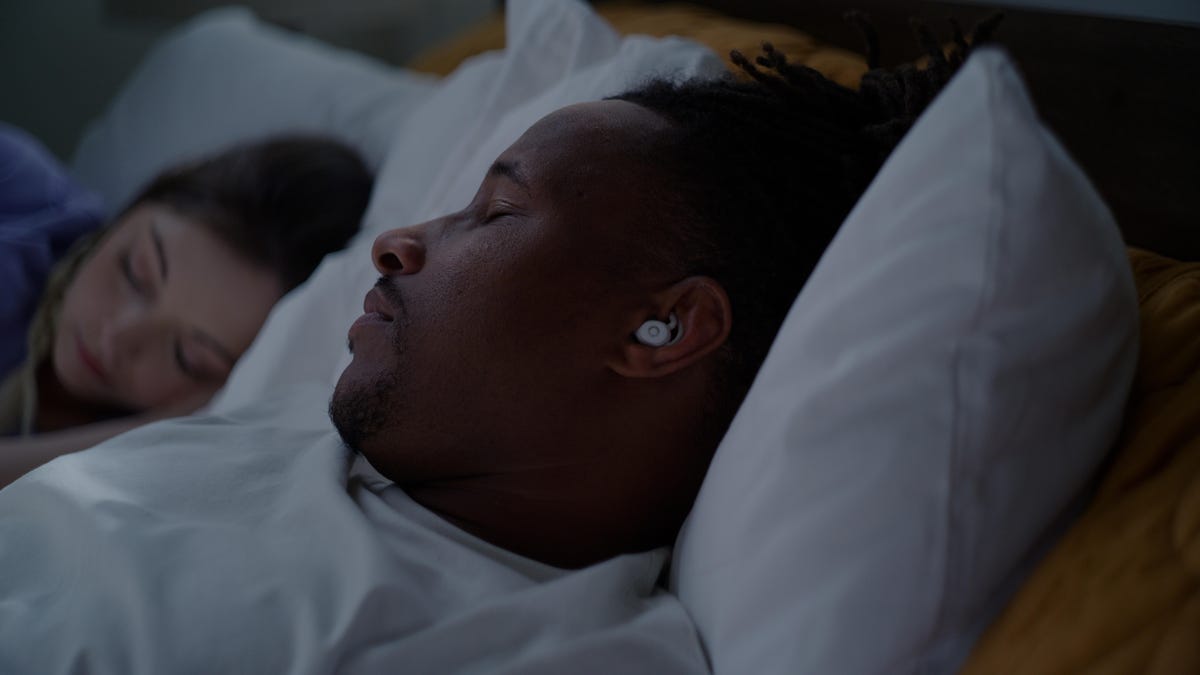 Why You Can Trust CNET
Why You Can Trust CNET Ozlo Sleepbuds Aim to Help You 'Go to Sleep and Stay Asleep'
Made in part by three ex-Bose employees, the earbuds have audio streaming and noise masking. Their Kickstarter campaign just launched.

Ozlo Sleepbuds are designed to mask noise and stream audio.
Ozlo Sleep, a new sleep and audio technology company, said Tuesday that it's launching earbuds designed for better rest, with features that include noise masking, audio streaming via Bluetooth, and sensors that can detect when you've fallen asleep.
Ozlo Sleepbuds are part of a 30-day Kickstarter campaign that started Tuesday, so they're not available to the general public yet. There's no word on when they will be exactly, but the company said the general presale should come before the holiday season. The retail price will be $299.
Ozlo Sleep was co-founded by three people who worked at Bose, maker of the now-discontinued Bose Sleepbuds. The company uses acquired and licensed technology from Bose in the new Ozlo Sleepbuds.
Brian Mulcahey, one of Ozlo's co-founders, said the new product was made, in part, based on two consumer notes they got back about Bose's product: There was no audio streaming and there were no sensors to give you information about how well you were sleeping. (The Soundcore Sleep A10 Earbuds by Anker have some of these features, like Bluetooth streaming and sleep monitoring.)
The Ozlo Sleepbuds use passive noise-canceling to help block out nearby sound and you can choose from several noise-masking tracks for consistent sounds that can lull you to sleep. Bluetooth connectivity allows the Sleepbuds to function as headphones so you can stream your own music. The battery for audio lasts up to 10 hours. But what's particularly neat is that you can toggle between the two modes. Ozlo co-founder N.B. Patil said wearers can "switch between streaming content and masking content, based on their choice."
This means you can program the sleep buds to play music for an hour, then switch to a noise-masking sound to play the rest of the night. Or you'll be able to set the Sleepbuds to play music until the sensors attached to the earbuds detect that you've fallen asleep, based on metrics like respiration rate and movement.
"The product is designed to help people go to sleep and stay asleep," Patil said.
The Ozlo Sleepbuds look like Bose's Sleepbuds, but they have audio streaming and sensors that will feed into a sleep-staging algorithm, something the company is testing in beta.
In addition to sensors in-ear, the Ozlo Sleepbuds case also includes sensors that can tell you things about your bedroom that are known to affect sleep quality, like room temperature and light exposure. All of this information will feed into a sleep algorithm and a daily sleep report, which the company is currently testing in beta.
The Ozlo Sleepbuds will come with four sizes of silicone tips. You can learn more about Ozlo's Kickstarter here, and follow the company for updates here.
Editors' note: As always, please note that CNET's reporting on crowdfunding campaigns is not an endorsement of the project or its creators. Before contributing to any campaign, read the crowdfunding site's policies -- in this case, Kickstarter -- to find out your rights (and refund policies, or the lack thereof) before and after a campaign ends.

